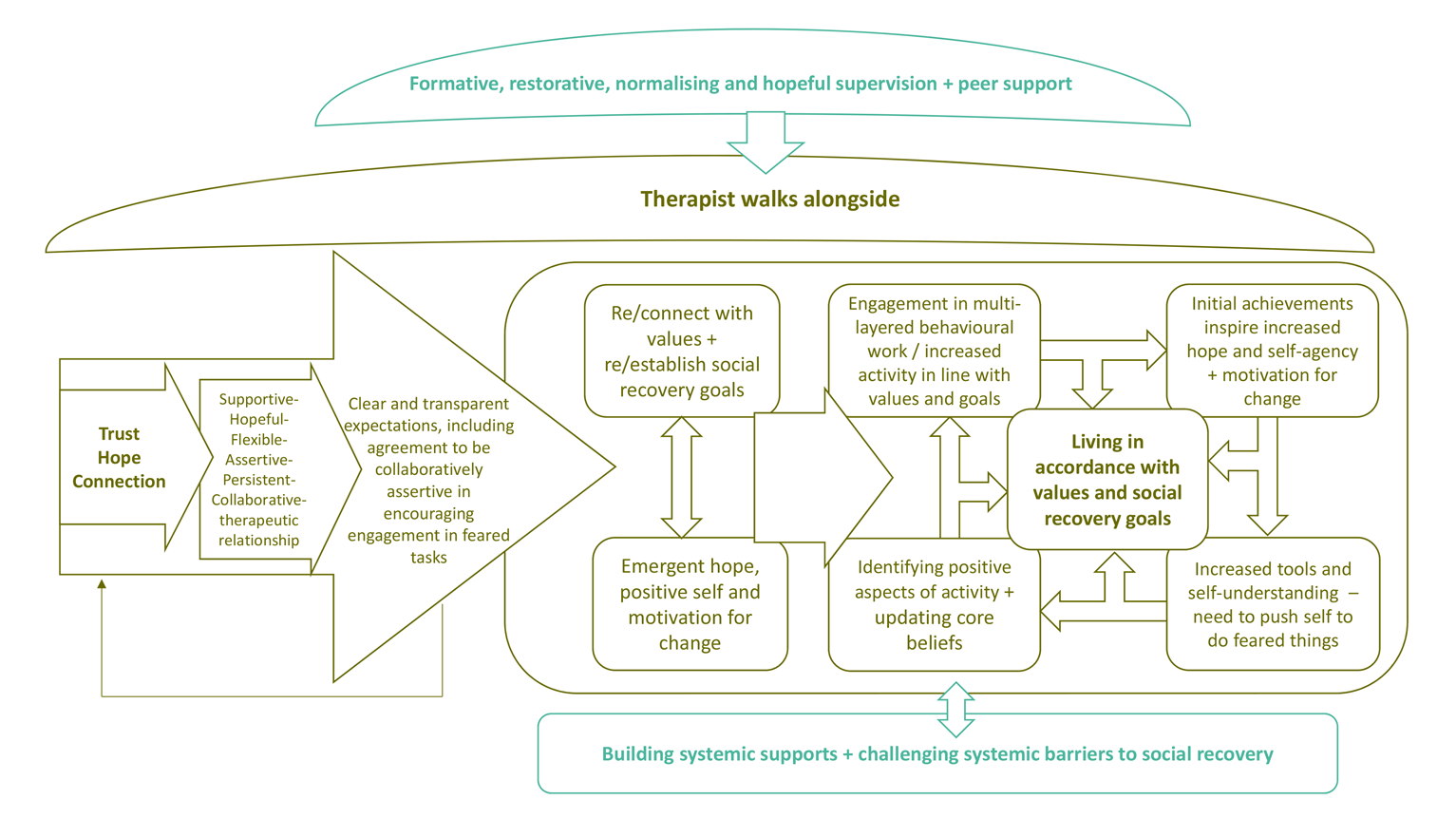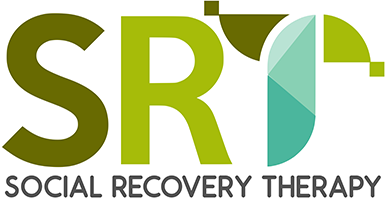
Social Recovery Therapy Model proceeds in three iterative and non-linear phases which are flexibly and responsively tailored to the individual:
- Stage 1 involves assessment and developing a social recovery formulation whilst promoting hope for social recovery.
- Stage 2 involves identifying and working towards medium to long-term goals through sustaining hope, self-agency and positive identity and identifying specific pathways toward meaningful activities guided by individual’s values.
- Stage 3 involves actively promoting structured activity using active behavioural work and supporting engagement with other organisations, institutions and activity providers.
Walking alongside: The SRT therapeutic relationship
The therapeutic relationship is paramount to the delivery of SRT. In the context of the active behavioural focus of the intervention with the emphasis on conducting the behavioural work outside of the clinic room with the therapist, the intent is that the therapist ‘walks alongside’ the individual. The SRT therapeutic relationship is:
1. Supportive, hopeful and flexible
- The development of trust and meaningful connection are important considerations of the SRT therapeutic relationship
- Providing a secure and supportive base from which individuals can begin to increase their activity, engage in feared situations and move towards their goals is essential
- SRT therapists provide a sense of ‘walking alongside’ individuals
2. Assertive and persistent but collaborative
- Individuals can arrive at SRT with a sense of futility and hopelessness and a history of struggling to engage with mental health services or alternative interventions
- SRT therapists need to consider flexible but assertive engagement
- SRT therapists may need to persist in encouraging individuals to engage in active behavioural work
- Assertive and persistent encouragement must be in the context of clear collaboration and transparent discussion of therapeutic expectations and tasks which frame therapeutic activities in relation to the SRT formulation and the individual’s values and goals
- SRT engagement using an assertive outreach approach
The Social Recovery Therapy Model – SRT is designed for people experiencing social disability – which we understand as (potentially lifelong) patterns of withdrawal and avoidance. SRT clients may be isolated and withdrawn, struggle to leave the house, experience difficulties in communicating, and may have experienced historical difficulties engaging with mental health and support services.
Flexible and assertive engagement is, therefore, the cornerstone of SRT and is part of each and every SRT session. SRT therapists need to work creatively to establish engagement, working adaptively to shape the engagement around individuals’ interests, goals, difficulties, preferences and needs. SRT therapists may need to dedicate more time to establishing initial engagement.
SRT therapists need to also allow for difficulties in establishing and sustaining contact with individuals, missed appointments, and periods of disengagement. SRT therapists should dedicate time to formulating disengagement. SRT therapists should also consider opportunities to engage in wider non-therapeutic case management type work (e.g. case work, case management or care coordination) as this can help address systemic barriers to activity, whilst also building trust between the client and therapist.
Additional components of SRT
Key symptom barriers to social recovery
Additional resources
The SRT Model Training Package
SRT Adherence Checklist
SRT Adherence in psychosis
SRT Manuals

